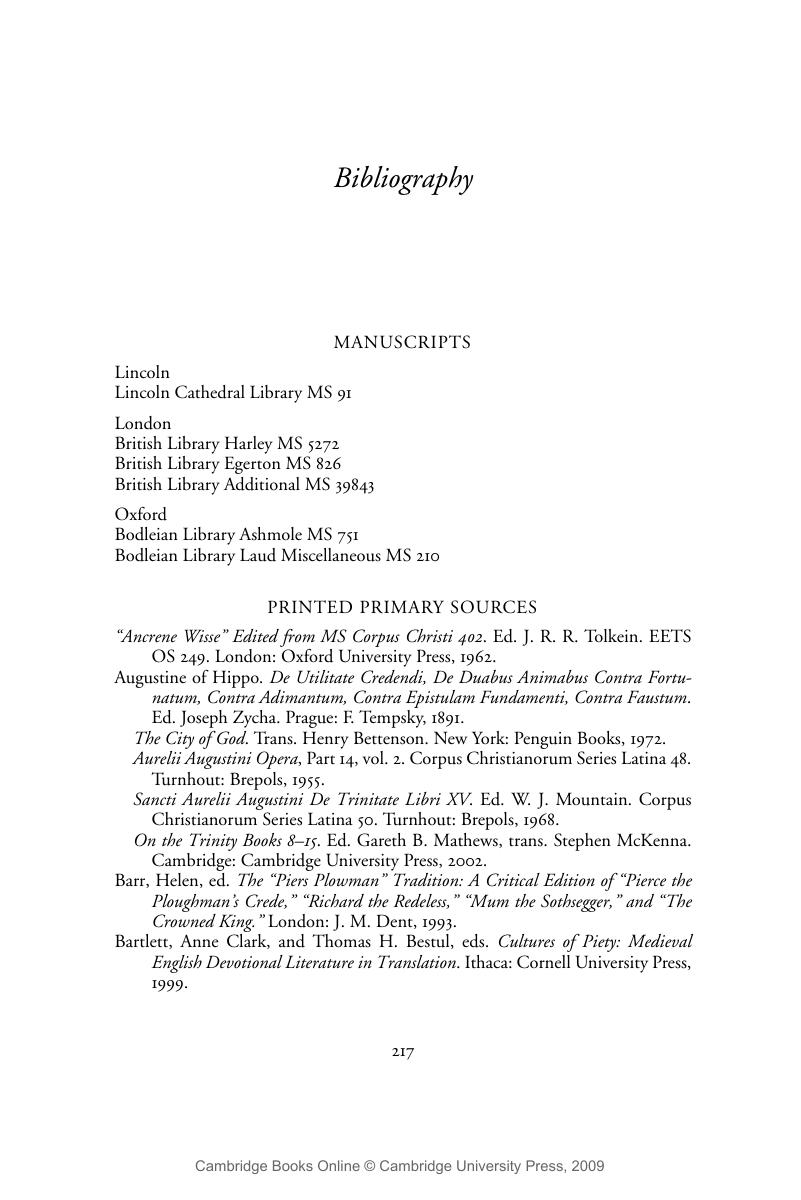Book contents
- Frontmatter
- Contents
- Preface
- Acknowledgments
- Abbreviations
- Introduction
- Chapter 1 Translations of the cloister: regulating spiritual aspiration
- Chapter 2 Dialogic form and clerical understanding
- Chapter 3 Lordship, pastoral care, and the order of charity
- Chapter 4 Clerical widows and the reform of preaching
- Conclusion: Spiritual guides in fifteenth-century books: cultural change and continuity
- Notes
- Bibliography
- Index
- CAMBRIDGE STUDIES IN MEDIEVAL LITERATURE
- References
Bibliography
Published online by Cambridge University Press: 30 June 2009
- Frontmatter
- Contents
- Preface
- Acknowledgments
- Abbreviations
- Introduction
- Chapter 1 Translations of the cloister: regulating spiritual aspiration
- Chapter 2 Dialogic form and clerical understanding
- Chapter 3 Lordship, pastoral care, and the order of charity
- Chapter 4 Clerical widows and the reform of preaching
- Conclusion: Spiritual guides in fifteenth-century books: cultural change and continuity
- Notes
- Bibliography
- Index
- CAMBRIDGE STUDIES IN MEDIEVAL LITERATURE
- References
Summary

- Type
- Chapter
- Information
- Lay Piety and Religious Discipline in Middle English Literature , pp. 217 - 234Publisher: Cambridge University PressPrint publication year: 2009



